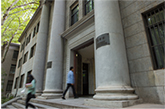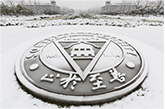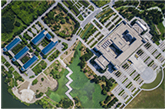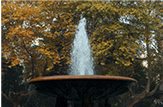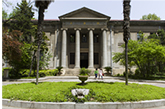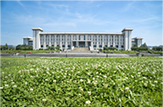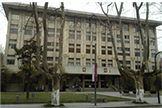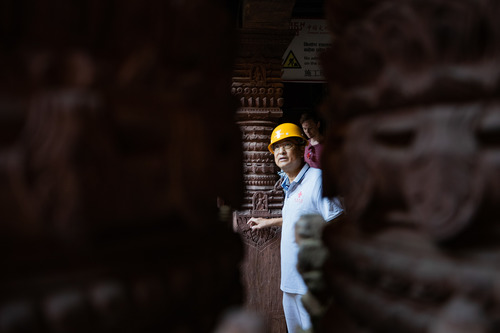
File Photo: An expert of the Chinese restoration team works at the restoration site of the nine-storeyed Basantapur complex in Kathmandu, Nepal, on Oct. 10, 2019. (Xinhua)
For about one month at a time, Ren Sijie has led groups of Chinese undergraduates to visit Nepal for three consecutive years, to help protect world heritage in Bhaktapur Municipality in the Kathmandu Valley.
Ren can still remember the first time she came to Nepal in August 2017, more than two years after an 8.1-magnitude earthquake jolted the country.
The disaster caused loss of life and property and serious damage to ancient buildings, Ren said.
According to the Department of Archaeology of Nepal's Ministry of Culture, Tourism and Civil Aviation, more than 60 Hindu temples across the nation were collapsed in the quake and more than 200 monuments were damaged. Many of the Kathmandu Valley's ancient buildings were also destroyed, including 12 UNESCO World Heritage Sites.
Ren is a teacher at Nanjing's Southeast University, which launched a project in 2017 to help revive damaged heritage sites in Nepal.
It is not merely about completing a course assignment or a graduation project, but also a social practice allowing students to use their professional knowledge to give back to society, said Sun Yingzhe, a teaching assistant at the university.
To facilitate reconstruction and restoration, drawings are essential. Ren and a total of three batches of about 60 undergraduates have completed the mappings of two UNESCO World Heritage Sites in Nepal, including the Changu Narayan Temple complex.
We used advanced digital means to improve our work efficiency, such as three-dimensional laser scanning and the aerial photography of unmanned aerial vehicles, Ren said.
According to the teacher, their work had been greatly supported by Nepal's archaeology authorities.
Sunil Prajapati, mayor of Bhaktapur Municipality, has encouraged us to extend our efforts to other aspects, such as the protection of some intangible cultural heritage in the country, she added.
Over the past three years, students have also designed dozens of bilingual travel brochures. As more Chinese tourists are coming to Nepal, we hope that its architecture will not only become popular destinations but can also be recognized for their cultural charms, Sun Yingzhe said.
Cao Yiming, a first-year graduate student at Southeast University, visited Bhaktapur in April. Within three weeks, she had been to religious sites all over the city.
I found that the concept of Western architectural heritage protection was not fully applicable to the practical needs of Nepal's cultural heritage protection as many temples in Bhaktapur are still in use, she said.
According to Ren, living heritage is one of the unique values of Nepal's architecture, and seeking a balance between development and protection is why they came to the country.
Asian cities tend to be densely populated. Also, economic development brings new challenges to the work of heritage preservation, she said.
Last year, Southeast University was selected as the network secretariat for the Asian Academy for Heritage Management, which was established by UNESCO and the International Center for the Study of the Preservation and Restoration of Cultural Property to strengthen and promote heritage management education in the Asia-Pacific region.
We hope that China and Nepal can establish more cooperation mechanisms in archaeology, architecture and other fields, train more professionals in the area of cultural relics protection for Nepal, and contribute to the protection of world heritage, Ren said.
Source: http://xhnewsapi.zhongguowangshi.com/share/news?id=360163513761792&from=timeline&isappinstalled=0


